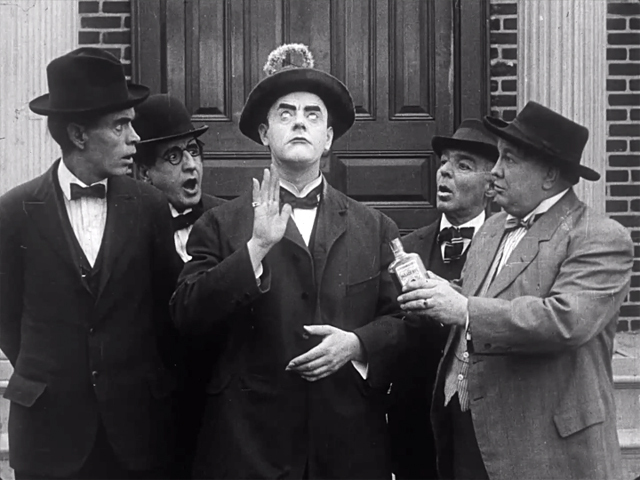Like many people who are into classic film, I only knew Harry Myers as the drunk millionaire in Charlie Chaplin’s City Lights (1931). I knew he didn’t just appear out of nowhere, hand-picked form obscurity the way Virginia Cherrill had been. So, when I spotted him as one of the two comedy relief cowboys in Zander the Great I thought I’d found a clue as to his prior work.
Okay, this was maybe fifteen years ago, and the star of that film and the other comedy relief cowboy and their respective careers would also catch up with me. They were of course, respectively, Marion Davies and Harry Watson Jr., a/k/a “Musty Suffer”.
Maybe this was more than fifteen years ago, or I’d have come home from that show I played at MoMA, fired up my dial-up modem, launched my Netscape browser and looked up Harry Myers on Infoseek.
What I’ve learned in the last half dozen years or so is that Harry Myers had been in movies since the mid-’teens and been part of a successful series of shorts with Rosemary Theby. He’d been in a number of features, including a silent film version of A Connecticut Yankee in King Arthur’s Court.
Myers was not known for playing a drunk, but Hank Mann wasn’t known for playing boxers either, nor Eddie Baker for portraying referees. Chaplin tended to surround himself with people who were silent comedy veterans, with hundreds of comedy shorts under their belts. No matter — Chaplin made a name for himself playing a comic inebriate with the Fred Karno company and would no doubt have helped Myers out with some of the physicality.
The Myers and Theby series are very hard to find, like a lot of comedy shorts from the mid-’teens are, and when one of them turns up you get out the confetti.
A couple years ago, I was asked to record a score for a Myers and Theby comedy that was going to be posted on the National Film Preservation Fund’s “Screening Room” website. The film is A MODEL HUSBAND (1916) — feel free to make your own jokes about the irony of the film’s title and my last name — and had turned up at the EYE Filmmuseum and been preserved by the Library of Congress.
It’s one of those films from its time where the challenge in scoring is that a scene will simply cut from the end of a scene directly to a title setting up the next one. So, my tactic is to make the fade-ins and fade-outs that we’d expect to be there to make the transitions smoother and not abrupt happen musically. In previewing the film, I made mental or written notes about the things that happen just before the cut as cues for me to resolve and transition musically.
This may not have been done in 1916 — in fact, I’m pretty sure it wasn’t — but a contemporary audience expects the less-choppy transitions, and it’s something I can do musically to help a viewer of today decode the film and enjoy it.
A MODEL HUSBAND (1916) is posted on its own page on the NFPF Screening Room site with excellent film notes by Steve Massa. It’s not set up for embedding, so you’ll just have to go to the page to watch it. Click on the frame grab below, and enjoy!

Harry Theby features prominently in my chapter on Rosemary Theby in SILENTS OF THE VAMPS. They had an interesting personal life together too!
Thanks for mentioning this! Always good to have more background on the lesser-knowns of silents available.